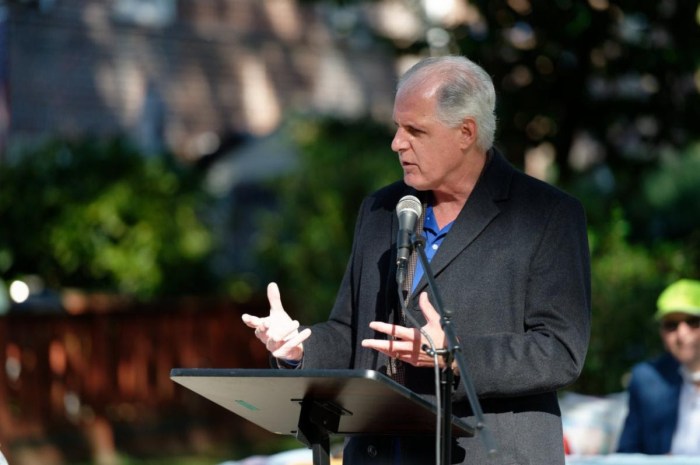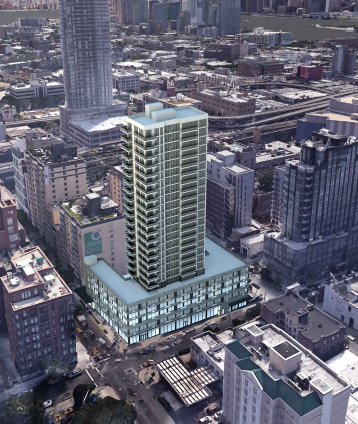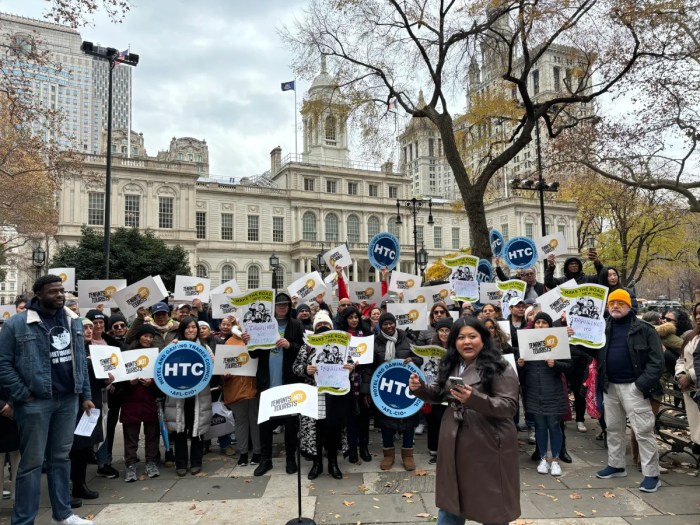By Alex Robinson
City Councilman Peter Koo (D-Flushing) has requested that the Department of City Planning take a look at overdevelopment in his district.
The councilman has asked the agency to conduct a study to determine areas that have “out-of-context” developments and to then make zoning amendments based on the study’s findings.
“My constituents deserve the best possible protections against overdevelopment in their neighborhoods, and I want to make sure no block is left behind,” Koo said.
The councilman’s appeal came after a group of Queensboro Hill neighbors became irate about a new two-story house on their block, at 146-15 56th Road, which they said dwarfed the small, single-story homes around it.
Don Capalbi, president of the Queensboro Hill Civic Association, forwarded the residents’ complaints to Koo’s office in February.
The new 2,290-square-foot house, which has been built legally under current zoning regulations, will replace an 899-square-foot home that was built in 1935 in a line of rowhouses, according to city Department of Buildings records.
“With Councilman Koo’s strong support, we anticipate City Planning will consider in a fair manner the zoning revisions necessary to deter extreme cases of neighborhood-destructive construction while we continue to support expansion of affordable housing,” Capalbi said.
A spokesman for City Planning said the agency has received Koo’s letter and is reviewing it.
Since the early 2000s, a coalition of civic leaders called the Queens Civic Congress has successfully worked to rezone a number of neighborhoods in northeast Queens to prevent out-of-scale houses from being built.
A rezoning of Bayside was finalized in 2005, along with downzonings of Whitestone and College Point that same year. A rezoning of Waldheim was adopted in 2008 and North Flushing was rezoned in 2010.
“We have fought long and hard to downzone many residential neighborhoods to prevent over-devleopment,” said Richard Hellenbrecht, the president of the Queens Civic Congress. “The residential areas of Queens are mostly inhabited by middle-class taxpayers who are critical for the future of the city.”
The group has also been pushing the city over the years to create a separate zoning district for single-family attached houses, such as the townhouses on 56th Road, as they currently fit into designations for multi-family units.
Urban planner Paul Graziano, who has worked on rezonings in much of northeast Queens, said that because the new house on 56th road is only 19 feet high and the row of houses is attached, the only thing that could be done to prevent houses of a similar size being built on that block would be to rezone it from its current R4 designation, to R3-2.
“If they were to rezone that half block to an R3-2, then properties would not be able to expand because it would not give them additional floor area,” he said.
R3-2 is the lowest density designation that allows multi-unit dwellings.
Graziano said the Queens Civic Congress previously pushed for a zoning change in other parts of Queensboro Hill that would prevent over-sized development, but City Planning failed to finalize its request.
Reach reporter Alex Robinson by e-mail at arobinson@cnglocal.com or by phone at 718-260-4566.



































